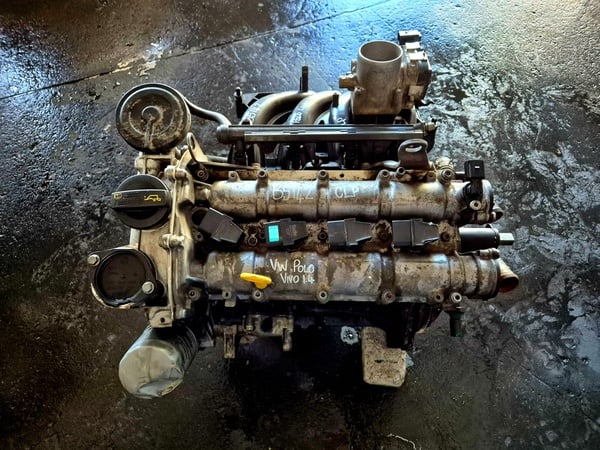Maintain consistent power with a high-performance clp engine.
Maintain consistent power with a high-performance clp engine.
Blog Article
Just How a Clp Engine Can Enhance Efficiency in Different Industries
The advent of CLP engines marks a considerable change in functional efficiency across different fields, driven by their ability to optimize fuel usage and decrease downtime. As organizations increasingly focus on sustainability alongside efficiency, the function of CLP engines comes to be even a lot more essential.
Summary of CLP Engines
CLP engines, or Constant Liquid Propellant engines, represent a considerable improvement in propulsion innovation, especially for area applications. These engines utilize a continuous feed system that permits the sustained expulsion of propellant, leading to enhanced performance and efficiency compared to typical strong or hybrid propulsion systems. By maintaining a constant flow of liquid propellant, CLP engines can attain a lot more accurate thrust control, which is essential for maneuvering spacecraft in numerous objective scenarios.
The layout of CLP engines incorporates sophisticated products and ingenious fuel monitoring systems. clp engine. This leads to decreased weight and enhanced integrity, crucial aspects for long-duration area missions. The continual operation reduces the danger of burning instability, an usual difficulty in standard rocket engines.

Advantages in Manufacturing
The manufacturing of Continuous Liquid Propellant (CLP) engines offers numerous remarkable benefits that improve both effectiveness and cost-effectiveness. One of the primary advantages is the structured manufacturing process, which reduces the intricacy connected with standard propulsion systems. By using liquid propellant, manufacturers can attain better accuracy in engine performance, leading to maximized power outcome and reduced waste.
Additionally, CLP engines promote a greater degree of modularity, permitting for less complicated combination into numerous production lines. This adaptability can significantly decrease lead times and enhance total functional versatility. Using CLP technology additionally has a tendency to minimize the demand for substantial maintenance as a result of fewer moving components, which translates right into decreased downtime and functional costs.

Applications in Logistics
Leveraging read the full info here Constant Fluid Propellant (CLP) engines in logistics uses substantial benefits in functional performance and integrity. These engines give a durable solution for various transport demands, making it possible for the smooth activity of items throughout huge ranges. The intrinsic style of CLP engines permits constant power outcome, which equates into smoother and much more foreseeable transport timetables.
Among the key applications of CLP engines in logistics is in durable products transport, where they can drive both ground and airborne lorries. Their ability to keep high efficiency under differing load problems guarantees that shipment timelines are fulfilled, therefore improving client contentment. In addition, CLP engines can be incorporated into i loved this automated logistics systems, helping with real-time monitoring and maximizing path planning.
In addition, the toughness of CLP engines decreases upkeep downtime, enabling logistics business to optimize their operational capabilities. This is specifically helpful in warehousing operations, where performance in taking care of and delivering goods is essential. As logistics continues to advance, the combination of CLP engines stands for a forward-thinking technique that not just enhances efficiency however additionally supports the sector's growing demands for integrity and speed.
Effect On Energy Effectiveness
How do Constant Fluid Propellant (CLP) engines enhance energy performance in transportation? CLP engines use a regular flow of liquid gas, optimizing combustion procedures and keeping a stable thrust result. This design reduces power losses connected with traditional combustion engines, where gas distribution can vary and result in inadequacies.
The continuous operation of CLP engines permits an extra reliable thermal cycle, resulting in higher certain impulse contrasted to standard engines. clp engine. This translates to reduced fuel usage for the exact same quantity of job done, significantly lowering operational expenses across different transport fields, including go now aviation and maritime industries
Furthermore, the capability of CLP engines to keep optimum efficiency under differing lots problems lowers the demand for constant velocity and slowdown, additionally boosting gas performance. Enhanced power effectiveness not just adds to cost savings however likewise results in reduce greenhouse gas discharges, lining up with worldwide sustainability goals.
Future Trends and Innovations
Emerging developments in Continuous Liquid Propellant (CLP) engine technology assurance to change the landscape of transport performance and sustainability. As markets pivot toward greener alternatives, CLP engines stand at the forefront, incorporating cutting-edge materials and design methodologies that boost efficiency while lessening environmental influence.
Among the most encouraging fads is the fostering of hybrid systems that combine CLP engines with renewable resource sources. This synergy can optimize fuel usage and lower exhausts, lining up with worldwide sustainability goals. Improvements in computational fluid characteristics (CFD) are assisting in the design of even more aerodynamically efficient engines, leading to minimized drag and improved gas efficiency.
Moreover, the development of wise surveillance systems is readied to boost operational performances. These systems leverage information analytics and IoT modern technology to enhance engine efficiency in real-time, ensuring that the engines run within their most reliable parameters.
As research study remains to explore alternate propellant solutions-- such as biofuels and synthetic fuels-- the future of CLP engines looks encouraging. By harnessing these advancements, sectors can not only improve their effectiveness yet also contribute substantially to a cleaner, extra sustainable future in transportation.
Final Thought
To conclude, CLP engines represent a significant improvement in performance throughout multiple industries. Their capability to enhance gas intake and lower operational costs, integrated with a constant feed system, boosts power result and functional integrity. The assimilation of advanced materials and fewer moving parts reduces maintenance demands, while positioning with sustainability goals settings CLP engines as an essential modern technology for the future. Continued development in this field guarantees additional enhancements in efficiency and environmental performance.
Report this page